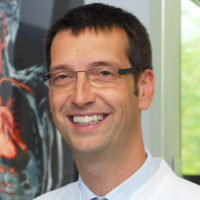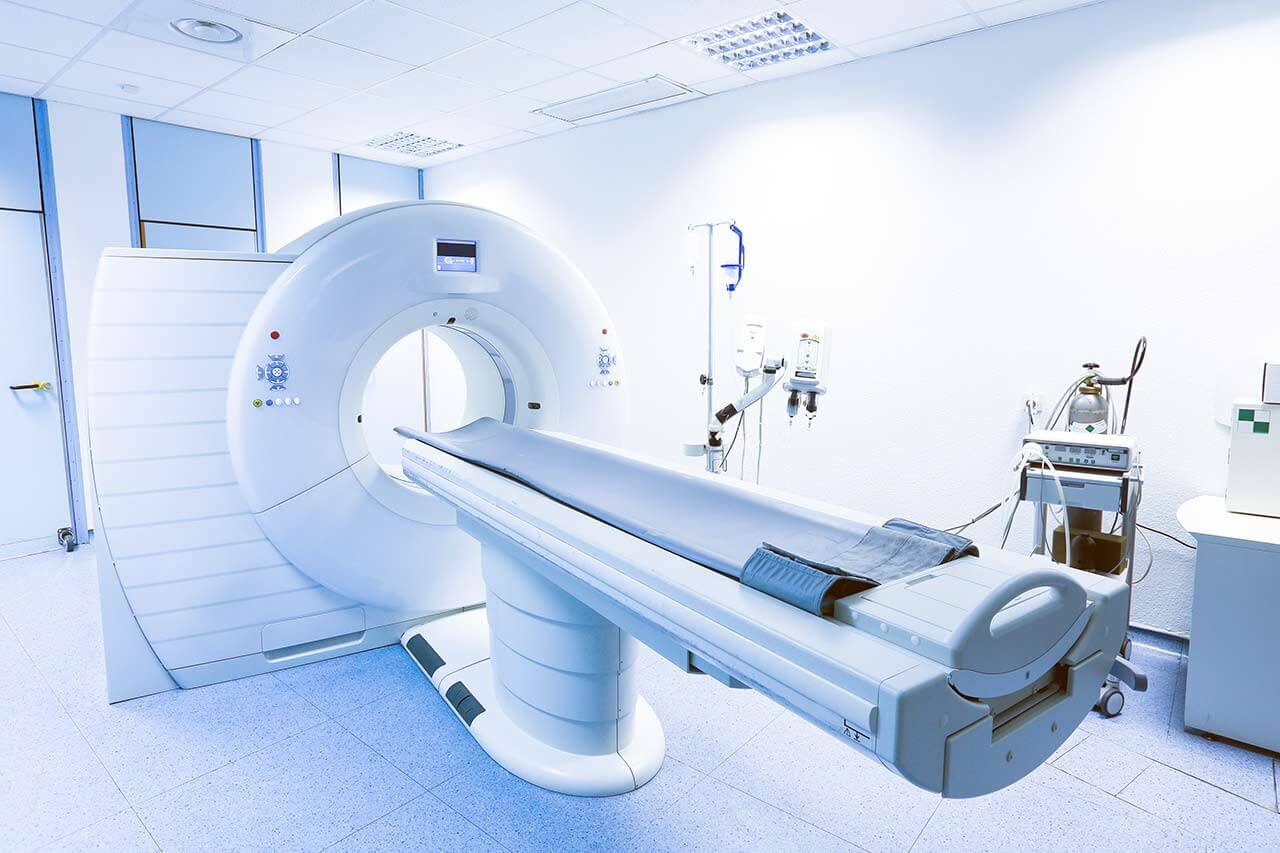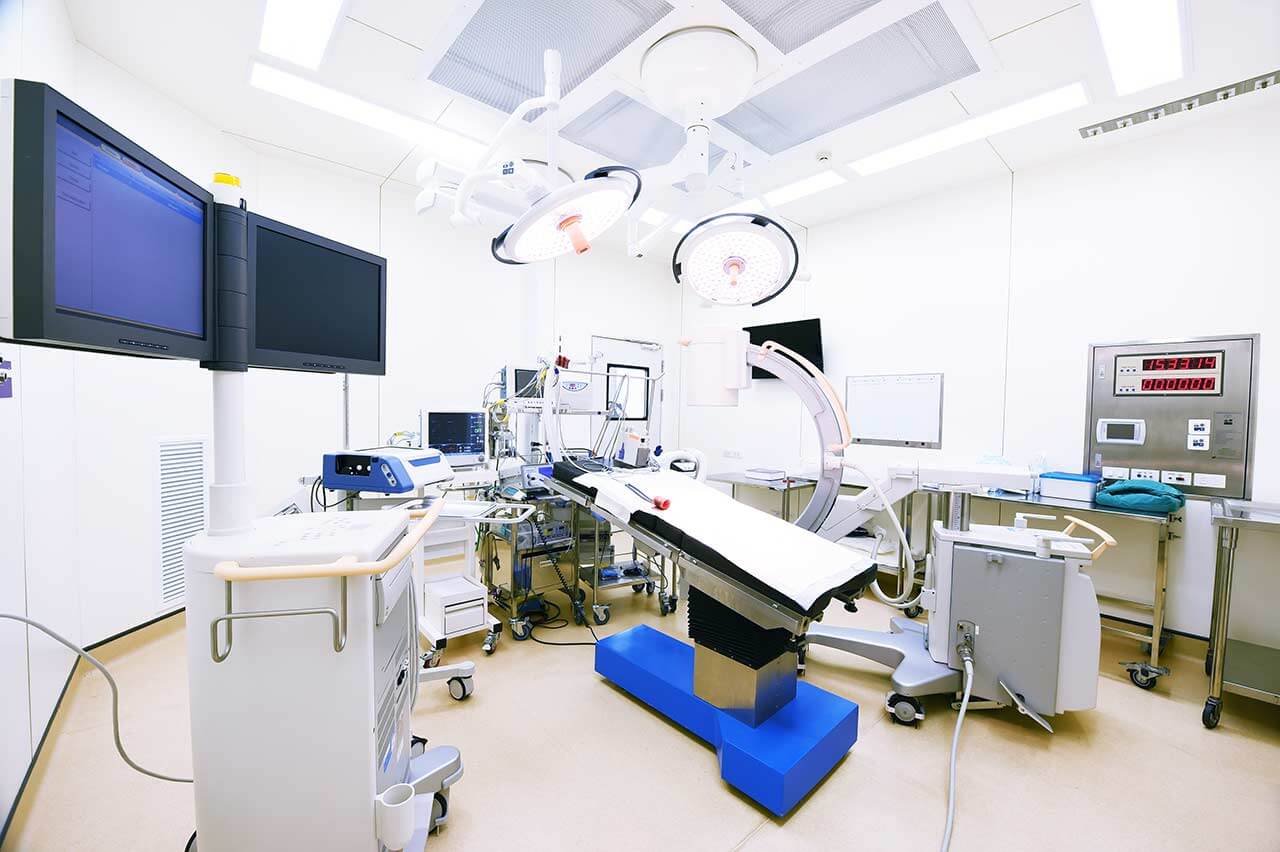
About the Department of Interventional Radiology at University Hospital Erlangen
The Department of Interventional Radiology at the University Hospital Erlangen offers the full range of services in this medical field. The department specializes in imaging diagnostics and image-guided interventional therapeutic procedures for the treatment of diseases of all organs and systems of the human body. The department has a progressive technological base, which allows conducting ultrasound examinations, digital radiography, CT scans and MRI, digital subtraction angiography and other diagnostic tests. Therapeutic interventional procedures are most often performed for vascular pathologies, cancers and other diseases. For its outstanding clinical activities, the medical facility was awarded the quality certificate of the German Society of Radiology (DRG) in the field of cardiovascular imaging diagnostics and the German Society for Interventional Radiology (DeGIR) in the field of interventional therapy. The department's specialists cooperate closely with oncologists, cardiologists, cardiac surgeons, neurosurgeons and other doctors of the university hospital. Such a multidisciplinary approach guarantees the best treatment results. The Chief Physician of the department is Prof. Dr. med. Michael Uder.
Imaging diagnostics plays a decisive role in making a diagnosis in almost all medical disciplines, and therefore the department diagnoses patients with suspected cancers, pathologies of joints, bones and soft tissues, breast diseases in women, cardiovascular diseases, and also provides the necessary diagnostic procedures for accidents and emergency clinical cases. If the confirmed diagnosis requires image-guided interventional therapy (for example, vascular obstruction or stenosis, vascular malformations, liver cancer), the patient immediately undergoes treatment. In other cases, the basic course of treatment takes place in a specialized department, under the guidance of highly specialized physicians.
Interventional therapy is performed using special catheters or stents. Its main advantage is that there is no need to make large incisions in the skin and soft tissues for access to the pathological focus. Therapeutic procedures are usually performed under x-ray or computed tomography guidance, so the doctor can clearly see everything that happens in the area of intervention on the screen or images, which guarantees high efficiency of manipulations. In addition, after this type of treatment, the patient does not experience any pain and has practically no risk of postoperative complications.
Since surgical interventions still involve the use of invasive techniques, the patient receives pain anesthesia: general anesthesia, regional anesthesia, or deep sedation. The optimal type of anesthesia is determined by the attending physician based on the patient's clinical data. Depending on the purpose of the therapeutic manipulation, a catheter, stent or balloon can be used. To advance the catheter to the pathological focus, the doctor makes a small incision in the forearm or groin, since this is where the largest vessels are located, through which it is easy enough to insert the catheter into the vascular bed. The interventional procedure can take less than half an hour or several hours – it all depends on the complexity of the pathology. As a rule, the patient leaves the hospital after 2-3 days.
The department's therapeutic offer includes various interventions for the dilation of arteries and veins in the upper and lower extremities, neck, thorax and abdominal cavity, as well as procedures for the elimination of blood clots, correction of thoracic and abdominal aortic aneurysms, embolization procedures for closing the vessels supplying benign and malignant tumors, chemoembolization procedures with local administration of a chemotherapy drug and other procedures. The department's specialists often resort to image-guided surgical interventions to stop internal bleeding.
The department's range of medical services includes:
- Diagnostic services
- Diagnostics of otolaryngological diseases (ENT diseases)
- Computed tomography (CT), also with contrast enhancement
- Magnetic resonance imaging (MRI), also with contrast enhancement
- Ultrasound examinations (most often used to diagnose pathologies in the neck)
- DIagnostics of the respiratory system
- Conventional X-ray examinations
- Computed tomography (CT), also with contrast enhancement
- Magnetic resonance imaging (MRI), also with contrast enhancement
- Ultrasound examinations
- Diagnostics of heart disease
- Ultrasound examination of the heart (echocardiography)
- Cardiac MRI
- Cardiac CT scans
- Diagnostics of vascular diseases
- Angiography (imaging method for interventional vascular examination)
- Ultrasound examinations
- Contrast-enhanced CT scans
- Contrast-enhanced MRI
- Diagnostics of abdominal and gastrointestinal pathologies
- Ultrasound examinations (also in combination with conventional X-ray examinations)
- Computed tomography (also for cancer staging and detecting metastases)
- Magnetic resonance imaging
- Virtual colonoscopy
- Diagnostics of kidney and urinary tract pathologies
- Ultrasound examinations
- CT scans
- MRI
- Diagnostics of pathologies of the reproductive system in men and women
- Ultrasound examinations
- CT scans
- MRI
- MRI-guided biopsy (for example, for suspected prostate cancer)
- Diagnostics of musculoskeletal pathologies
- Conventional X-ray
- Ultrasound examinations
- CT scans
- MRI
- Diagnostics of breast pathologies
- Mammography for breast cancer detection
- Breast ultrasound (including elastography)
- MRI and MRI-guided biopsy (vacuum biopsy, fine needle aspiration biopsy)
- Galactography (imaging of the milk ducts of the breast using the X-ray system)
- Tomosynthesis
- Diagnostics of otolaryngological diseases (ENT diseases)
- Therapeutic services
- Drainage placement
- Vena cava filter implantation
- Radiofrequency ablation
- Balloon angioplasty
- Stent implantation
- Embolization
- Thrombolytic therapy
- Transarterial chemoembolization (TACE)
- Correction of vascular malformations
- Renal denervation
- Image-guided interventions for internal bleeding
- Other diagnostic and therapeutic methods
Curriculum vitae
Prof. Dr. med. Michael Uder studied Human Medicine at the Saarland University in Homburg, where he also underwent board certification in Radiology. In 2002, the doctor defended his doctoral dissertation on the side effects of radiopaque drugs on the kidneys. From 2003 to 2009, he served as a Professor in the Department of Interventional Radiology at the University Hospital Erlangen. In 2009, the Professor took the post of the Head of this department.
Dr. Uder is also the first Chairman of the Bavarian Radiological Society and the Chairman of the Academy for Advanced Training in Radiology. The doctor also chairs the Working Group of the German Radiological Society (sponsored by the Professional Association of German Radiologists).
Photo of the doctor: (c) Universitätsklinikum Erlangen




